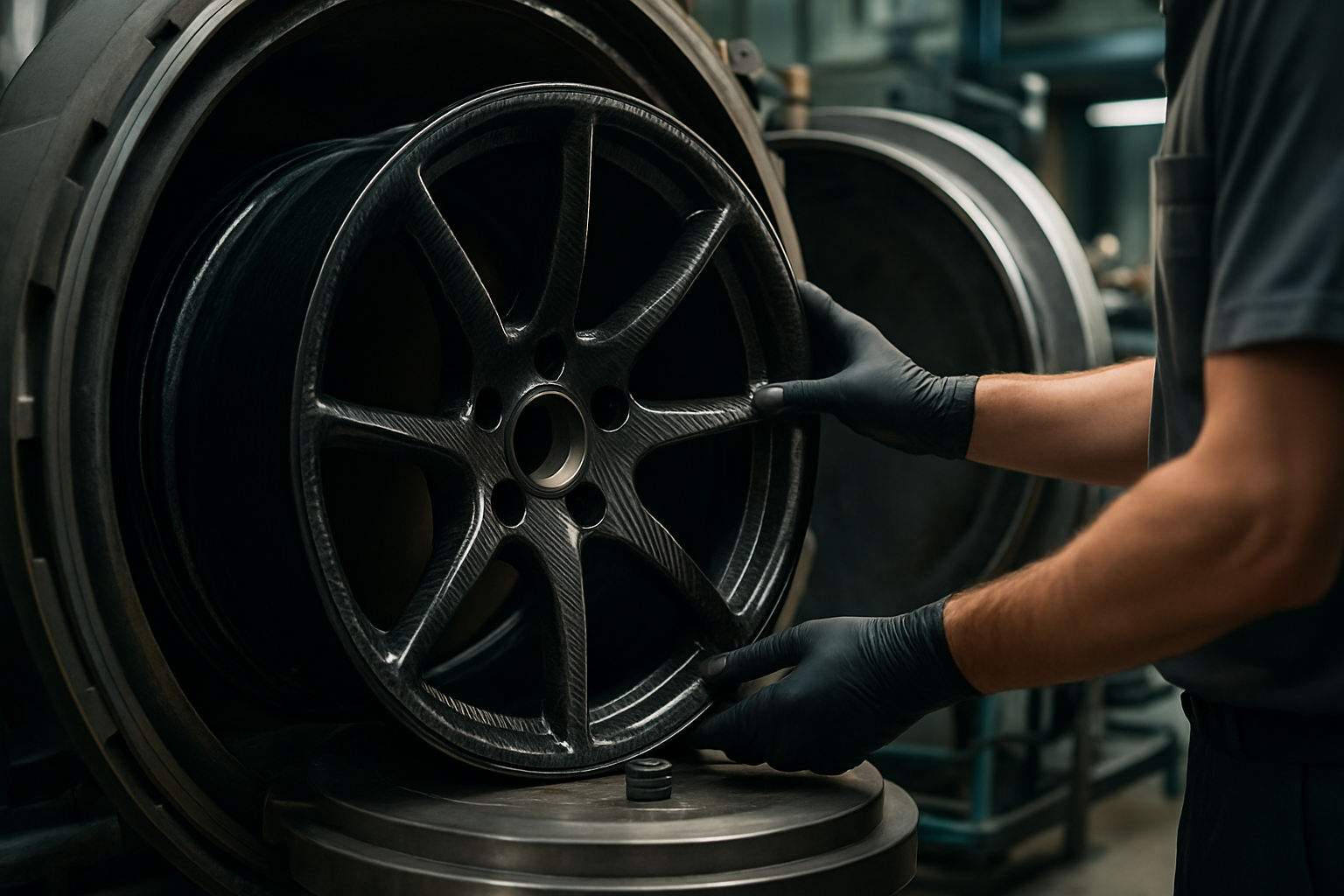Unveiling the Hidden Art of Carbon Fiber Wheel Manufacturing
In the realm of automotive performance, where every gram counts and aesthetics reign supreme, carbon fiber wheels have emerged as the pinnacle of lightweight luxury. This cutting-edge technology, once reserved for the most elite racing machines, is now making its way into high-end production vehicles. But what exactly goes into creating these marvels of engineering? Let's dive into the intricate world of carbon fiber wheel manufacturing, exploring the process that turns raw materials into automotive works of art.

The Raw Ingredients: More Than Just Carbon
The journey of a carbon fiber wheel begins with the selection of high-quality materials. Contrary to popular belief, carbon fiber wheels aren’t made solely from carbon. The primary component is indeed carbon fiber, typically in the form of pre-impregnated sheets or tows. These are combined with a carefully formulated resin system, often epoxy-based, which acts as the binding agent. Additional materials like core materials for structural reinforcement and surface veils for cosmetic finishing are also crucial to the final product.
Molding Magic: Shaping the Future
The heart of carbon fiber wheel manufacturing lies in the molding process. Unlike traditional metal wheels that are cast or forged, carbon fiber wheels are built up layer by layer in precision molds. This process, known as layup, requires extreme attention to detail. Technicians carefully place each layer of carbon fiber, ensuring proper orientation to achieve the desired strength and stiffness properties. The layup process is both an art and a science, with wheel designers specifying exact fiber orientations to optimize performance characteristics.
Under Pressure: The Curing Process
Once the layup is complete, the wheel enters the curing phase. This involves subjecting the molded wheel to high pressure and temperature in an autoclave. The extreme conditions cause the resin to flow and then cure, bonding the carbon fibers together into a solid structure. The curing cycle is meticulously controlled, with precise temperature and pressure profiles tailored to the specific resin system and wheel design. This process can take several hours and is critical in determining the final properties of the wheel.
Precision Finishing: From Rough to Refined
After curing, the wheel emerges as a rough-hewn piece, far from the sleek product we see on high-performance vehicles. The finishing process involves a combination of CNC machining, hand finishing, and quality control checks. CNC machines precisely trim excess material and create critical features like bolt holes and valve stem openings. Skilled technicians then take over, meticulously sanding and polishing the wheel to achieve the desired surface finish. This stage is where the true beauty of the carbon fiber weave is revealed.
Quality Assurance: Testing for Perfection
The final stage in carbon fiber wheel manufacturing is perhaps the most crucial: rigorous testing. Each wheel undergoes a battery of tests to ensure it meets or exceeds industry standards for strength, stiffness, and durability. These tests include impact resistance, fatigue testing, and radial load testing. Advanced techniques like CT scanning are often employed to detect any internal defects invisible to the naked eye. Only wheels that pass every test with flying colors make it onto vehicles, ensuring the highest levels of performance and safety.
In conclusion, the manufacturing of carbon fiber wheels represents a harmonious blend of cutting-edge technology and artisanal craftsmanship. From the careful selection of raw materials to the final quality assurance tests, every step in the process contributes to creating a product that pushes the boundaries of what’s possible in wheel design. As this technology continues to evolve and become more accessible, we can expect to see carbon fiber wheels playing an increasingly prominent role in shaping the future of automotive performance and design.





